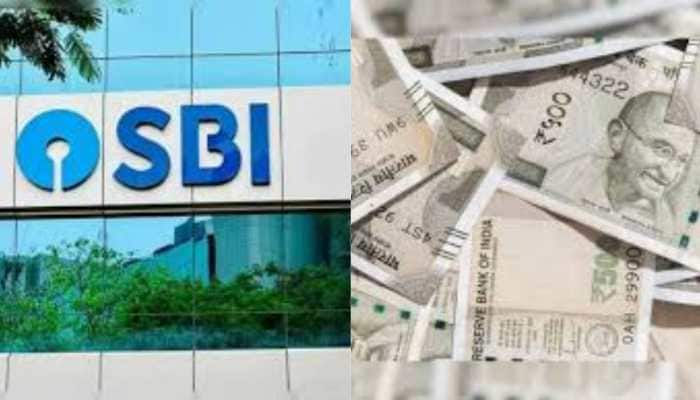The A-Z of Naxal menace
India, already surrounded by two hostile neighbours in China and Pakistan, faces a new challenge, i.e. the violence infested threat from Naxals.
Trending Photos
)
 Biplob Ghosal
India, already surrounded by two hostile neighbours in China and Pakistan, faces a challenge that emanates from its own soil, i.e., the violence infested threat from Naxals.
The gravity of the threat can be judged by Prime Minister Manmohan Singh’s statement: “I have consistently held that left-wing extremism is perhaps the gravest internal security threat we face. We have not achieved as much success as we would have liked in containing it. It is a matter of concern that despite our efforts, the level of violence in the affected states continues to rise.”
Both the PM and Home Minister P Chidambaram have realised the grave hazard and operations to deal with the menace have gathered momentum.
How it all started?
The root of the Naxal movement dates back to 1948 –Telangana struggle when more than 2000 villages took part in the peasant movement. In the same year, a Leftist ideological document, ‘Andhra Letter’, laid down a revolutionary strategy based on China’s Mao Tse-Tung’s new democracy.
However, this might have just been a spark; the actual fire was ignited by Communist leader Charu Majumdar who founded the Naxalbari movement in the Darjeeling district of West Bengal (WB). It all started with the landlords attacking local tribal peasants and forcefully seizing their land. As a consequence, they hit back, which further provoked the CPI (M) led government in WB to crackdown on them with force, which led to many casualties. The Centre, led by Congress, supported the state government and hence, indirectly became responsible for the birth of Naxalism.
Though, the Naxalist movement was low profile during the 70s’, at present, it has gained prominence in more than 200 districts in states like Jharkhand, Bihar, WB, Chhattisgarh. Other states like Orissa too are slowly, but surely getting engulfed.
When did the Government wake up?
The government, it seems, has begun to really take stock of the situation after the deadly violence has begun to take toll. Killings and atrocities have become the order of the day for Naxalites. The security forces and armed Naxalites have been at loggerheads directly for the past two to three years. According to government data, Naxalites, who have become the gravest internal security threat forcing the Centre to plan an all-out offensive, have killed more than 2,600 people, including civilians, in just the past three years.
Why has the Government failed so far?
It is truly shocking to note why the government failed in assessing, as well as in countering the threat. The government’s stance has been consistently myopic towards tackling the problem. At a time when the movement should have been dealt with good governance, it tried to suppress it with sheer force. Another reason is the presence of different governments, both, at the Centre and the State that paid little attention, and moreover, termed it as a mild law and order problem.
The TDP government in Andhra Pradesh, and Congress in Tamil Nadu and at the Centre, viewed Naxalites as incapable of anything major, and the-then Home Minister Zail Singh who was in power during 1980-1982, categorically termed it as a law and order problem and asked the states to tackle it themselves.
What comes out as a peculiarity here is that the government itself was busy in other issues such as border problems, terrorism and gave this movement ample amount of time to organise itself.
Another aspect which government has lacked-in is assessing the root of the problem, i.e., the ideology. The government may say that they have followed up with development programmes, but the Naxalists have destroyed schools, telephone towers or other government projects. This is because they follow a different set of ideas and not what is laid down in the Indian Constitution.
They don’t want a democratic set-up that the nation follows, instead, they want to propagate their own school of thought and run their own government. They totally disapprove of the Indian system of governance and teaching. The Naxalites claim to represent the most oppressed people in India, those who are often left untouched by India’s development and bypassed by the electoral process. This is where the crux of problem lies and the government this needs to reconsider its approach.
Though a part of the solution can be taken from Home Minister P Chidambaram’s statement, “I am of the view and my ministry is of the view that we would first have to clear and hold an area dominated by Naxalites and then developmental activities will take place.”
It is not that people have just shifted to Naxal camps and moved away to jungles and taken up arms at the slightest provocation. It is the government’s approach that has forced them to do so. Salwa Judum, which was formed by Chhattisgarh government for restoring peace in the area, has instead proved to be a violent institution which served only to further provoke.
According to the Committee Against Violence On Women’s (CAVOW) report, “Women have been raped and molested, dole being given out to people is insufficient, ration does not last for the whole week, international organisations working out of the area have documented that there is malnutrition and hunger, minors are being recruited as Special Police Officers and under-trial women in jails are victims of sexual abuse.” Even the Supreme Court had expressed its disapproval of the Constitution of Salwa Judum by Chhattisgarh government, and giving them arms to tackle the Naxal menace in 2008.
The government has failed to give these people their own rights, and above all, deprived them of what they possessed. A report by the Agrarian Relations and Unfinished Task of Land Reforms states that “The temples of modern India reduced millions of tribal people to ecological refugees”; now “the minerals seen as the building blocks of modern India” are putting them “at risk of losing their land through acquisition and further disruption of their societies and economies”. These types of policies create insecurity and a cycle of growing lawlessness and poverty. Thus, violence becomes a natural outcome of state’s neo-liberal economic agenda.
The attitude of politicians has also added fuel to the fire. For grabbing votes, they have either made people fight among themselves or suppressed them using force. Some states have set up their cadre base, which are involved in killing and encroachment. The politicians need to think about the country first, rather than acquiring a coveted chair.
In a renowned newspaper, it was published that a top Naxal leader Narla Rabi Sharma, who is wanted in the killing of Jharkhand intelligence officer PS Induwar, said, “They would continue to fight oppression and would try and get Maoist prisoners freed. He also disclosed that the Maoists had whole heartedly backed the TMC in Nandigram and even now some of the members were in Nandigram to help TMC strengthen its position.”
What can be done?
Our government, which is now beginning to get a true sense of the problem, needs to focus on gathering intelligence, modernising its policing, and taking help of the Army as offensive action is needed to defeat Naxals. And with all this, good governance should go hand in hand to eradicate poverty from the affected areas.
Development should be the key and both the Centre and the state governments should ensure adequate as well as fruitful allocation of funds. Thousands of crores sanctioned by the Centre should not get wasted. Good monitoring and stringent punishment should be ensured for the defaulters.
Our police system should be revamped, and the paramilitary as well as the Army should train them. Better arms and sophisticated machinery should be provided to counter the Maoists as there are several examples of policemen falling prey to Naxals, which reflects the inability of the policemen. Thus the government should ensure modernising the police force and that too in a quick succession.
A different approach can be set up, like the one suggested by an expert on security and anti-terrorism operations, B Raman: “Judicious mix of incentives, disincentives and political initiatives- incentives to section of society in the affected areas who have kept away from movement despite intimidation, disincentives who have taken up arms in the form of vigorous application of the law against them and political initiatives to counter the ideological attraction.”
Negotiations like what Andhra Pradesh (AP) government did in 2004 with the Maoist rebels, is another viable option. The government can go for a similar option as violence had lessened after the truce talks.
India has a porous border with Nepal, China and Bangladesh and their involvement in fuelling this menace is not hidden. It is now evident that Maoists have external linkages. Recently, Home Secretary GK Pillai said that “Chinese are big smugglers... suppliers of small arms. I am sure that the Maoists also get them.”
Even the Home Minister had said last month that the Maoists were acquiring weapons through Bangladesh, Myanmar and possibly Nepal. “We know now that the weapons are coming through Bangladesh and Myanmar and possibly Nepal,” he had said. This aspect should be strictly and vigilantly tackled.
Apart from these, there are problems of caste and social discrimination. The Naxalites get an opportunity in attracting these marginalised people to resort to violence in the name of justice.
The Naxals should realise they have failed in a major part of their objective, as they have stayed away from mainstream national politics and just confronted the state through violent means. They should realise they can disrupt and destroy only up to a certain extent, but cannot defeat the state forces. Thus, they should come forward and hold meaningful talks with the government and fight for their rights by engaging themselves in the state administration.
Being a democratic and peace loving country we cannot repeat the experience of Lanka’s war on LTTE or Chinese crackdown of Uighurs and Tibetans. They are our own people, thus the government needs to take a firm stand by winning the battle of both the guns and the hearts.
Biplob Ghosal
India, already surrounded by two hostile neighbours in China and Pakistan, faces a challenge that emanates from its own soil, i.e., the violence infested threat from Naxals.
The gravity of the threat can be judged by Prime Minister Manmohan Singh’s statement: “I have consistently held that left-wing extremism is perhaps the gravest internal security threat we face. We have not achieved as much success as we would have liked in containing it. It is a matter of concern that despite our efforts, the level of violence in the affected states continues to rise.”
Both the PM and Home Minister P Chidambaram have realised the grave hazard and operations to deal with the menace have gathered momentum.
How it all started?
The root of the Naxal movement dates back to 1948 –Telangana struggle when more than 2000 villages took part in the peasant movement. In the same year, a Leftist ideological document, ‘Andhra Letter’, laid down a revolutionary strategy based on China’s Mao Tse-Tung’s new democracy.
However, this might have just been a spark; the actual fire was ignited by Communist leader Charu Majumdar who founded the Naxalbari movement in the Darjeeling district of West Bengal (WB). It all started with the landlords attacking local tribal peasants and forcefully seizing their land. As a consequence, they hit back, which further provoked the CPI (M) led government in WB to crackdown on them with force, which led to many casualties. The Centre, led by Congress, supported the state government and hence, indirectly became responsible for the birth of Naxalism.
Though, the Naxalist movement was low profile during the 70s’, at present, it has gained prominence in more than 200 districts in states like Jharkhand, Bihar, WB, Chhattisgarh. Other states like Orissa too are slowly, but surely getting engulfed.
When did the Government wake up?
The government, it seems, has begun to really take stock of the situation after the deadly violence has begun to take toll. Killings and atrocities have become the order of the day for Naxalites. The security forces and armed Naxalites have been at loggerheads directly for the past two to three years. According to government data, Naxalites, who have become the gravest internal security threat forcing the Centre to plan an all-out offensive, have killed more than 2,600 people, including civilians, in just the past three years.
Why has the Government failed so far?
It is truly shocking to note why the government failed in assessing, as well as in countering the threat. The government’s stance has been consistently myopic towards tackling the problem. At a time when the movement should have been dealt with good governance, it tried to suppress it with sheer force. Another reason is the presence of different governments, both, at the Centre and the State that paid little attention, and moreover, termed it as a mild law and order problem.
The TDP government in Andhra Pradesh, and Congress in Tamil Nadu and at the Centre, viewed Naxalites as incapable of anything major, and the-then Home Minister Zail Singh who was in power during 1980-1982, categorically termed it as a law and order problem and asked the states to tackle it themselves.
What comes out as a peculiarity here is that the government itself was busy in other issues such as border problems, terrorism and gave this movement ample amount of time to organise itself.
Another aspect which government has lacked-in is assessing the root of the problem, i.e., the ideology. The government may say that they have followed up with development programmes, but the Naxalists have destroyed schools, telephone towers or other government projects. This is because they follow a different set of ideas and not what is laid down in the Indian Constitution.
They don’t want a democratic set-up that the nation follows, instead, they want to propagate their own school of thought and run their own government. They totally disapprove of the Indian system of governance and teaching. The Naxalites claim to represent the most oppressed people in India, those who are often left untouched by India’s development and bypassed by the electoral process. This is where the crux of problem lies and the government this needs to reconsider its approach.
Though a part of the solution can be taken from Home Minister P Chidambaram’s statement, “I am of the view and my ministry is of the view that we would first have to clear and hold an area dominated by Naxalites and then developmental activities will take place.”
It is not that people have just shifted to Naxal camps and moved away to jungles and taken up arms at the slightest provocation. It is the government’s approach that has forced them to do so. Salwa Judum, which was formed by Chhattisgarh government for restoring peace in the area, has instead proved to be a violent institution which served only to further provoke.
According to the Committee Against Violence On Women’s (CAVOW) report, “Women have been raped and molested, dole being given out to people is insufficient, ration does not last for the whole week, international organisations working out of the area have documented that there is malnutrition and hunger, minors are being recruited as Special Police Officers and under-trial women in jails are victims of sexual abuse.” Even the Supreme Court had expressed its disapproval of the Constitution of Salwa Judum by Chhattisgarh government, and giving them arms to tackle the Naxal menace in 2008.
The government has failed to give these people their own rights, and above all, deprived them of what they possessed. A report by the Agrarian Relations and Unfinished Task of Land Reforms states that “The temples of modern India reduced millions of tribal people to ecological refugees”; now “the minerals seen as the building blocks of modern India” are putting them “at risk of losing their land through acquisition and further disruption of their societies and economies”. These types of policies create insecurity and a cycle of growing lawlessness and poverty. Thus, violence becomes a natural outcome of state’s neo-liberal economic agenda.
The attitude of politicians has also added fuel to the fire. For grabbing votes, they have either made people fight among themselves or suppressed them using force. Some states have set up their cadre base, which are involved in killing and encroachment. The politicians need to think about the country first, rather than acquiring a coveted chair.
In a renowned newspaper, it was published that a top Naxal leader Narla Rabi Sharma, who is wanted in the killing of Jharkhand intelligence officer PS Induwar, said, “They would continue to fight oppression and would try and get Maoist prisoners freed. He also disclosed that the Maoists had whole heartedly backed the TMC in Nandigram and even now some of the members were in Nandigram to help TMC strengthen its position.”
What can be done?
Our government, which is now beginning to get a true sense of the problem, needs to focus on gathering intelligence, modernising its policing, and taking help of the Army as offensive action is needed to defeat Naxals. And with all this, good governance should go hand in hand to eradicate poverty from the affected areas.
Development should be the key and both the Centre and the state governments should ensure adequate as well as fruitful allocation of funds. Thousands of crores sanctioned by the Centre should not get wasted. Good monitoring and stringent punishment should be ensured for the defaulters.
Our police system should be revamped, and the paramilitary as well as the Army should train them. Better arms and sophisticated machinery should be provided to counter the Maoists as there are several examples of policemen falling prey to Naxals, which reflects the inability of the policemen. Thus the government should ensure modernising the police force and that too in a quick succession.
A different approach can be set up, like the one suggested by an expert on security and anti-terrorism operations, B Raman: “Judicious mix of incentives, disincentives and political initiatives- incentives to section of society in the affected areas who have kept away from movement despite intimidation, disincentives who have taken up arms in the form of vigorous application of the law against them and political initiatives to counter the ideological attraction.”
Negotiations like what Andhra Pradesh (AP) government did in 2004 with the Maoist rebels, is another viable option. The government can go for a similar option as violence had lessened after the truce talks.
India has a porous border with Nepal, China and Bangladesh and their involvement in fuelling this menace is not hidden. It is now evident that Maoists have external linkages. Recently, Home Secretary GK Pillai said that “Chinese are big smugglers... suppliers of small arms. I am sure that the Maoists also get them.”
Even the Home Minister had said last month that the Maoists were acquiring weapons through Bangladesh, Myanmar and possibly Nepal. “We know now that the weapons are coming through Bangladesh and Myanmar and possibly Nepal,” he had said. This aspect should be strictly and vigilantly tackled.
Apart from these, there are problems of caste and social discrimination. The Naxalites get an opportunity in attracting these marginalised people to resort to violence in the name of justice.
The Naxals should realise they have failed in a major part of their objective, as they have stayed away from mainstream national politics and just confronted the state through violent means. They should realise they can disrupt and destroy only up to a certain extent, but cannot defeat the state forces. Thus, they should come forward and hold meaningful talks with the government and fight for their rights by engaging themselves in the state administration.
Being a democratic and peace loving country we cannot repeat the experience of Lanka’s war on LTTE or Chinese crackdown of Uighurs and Tibetans. They are our own people, thus the government needs to take a firm stand by winning the battle of both the guns and the hearts.
Stay informed on all the latest news, real-time breaking news updates, and follow all the important headlines in india news and world News on Zee News.
Advertisement
Live Tv
Advertisement







)
)
)
)
)
)
)
)
)
)
